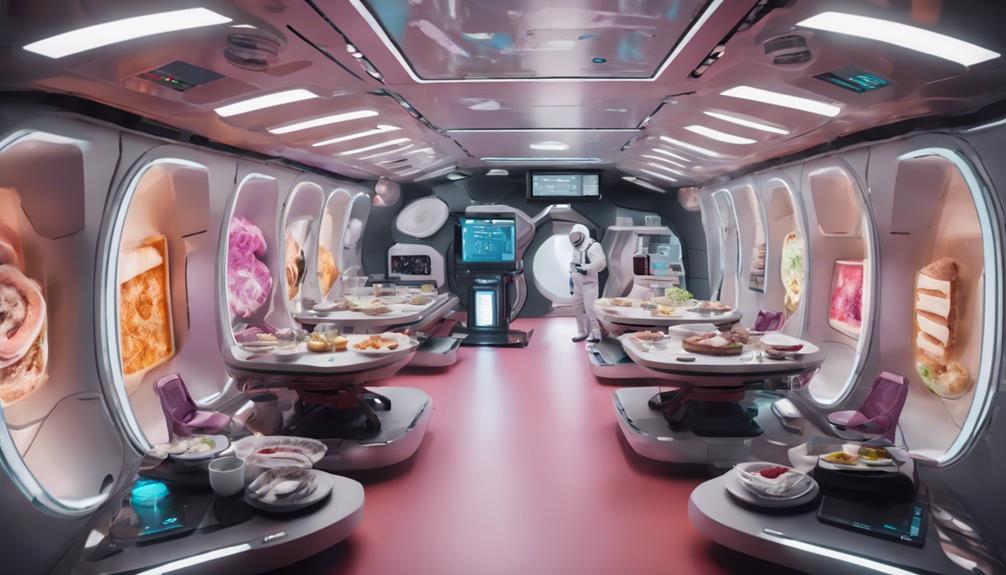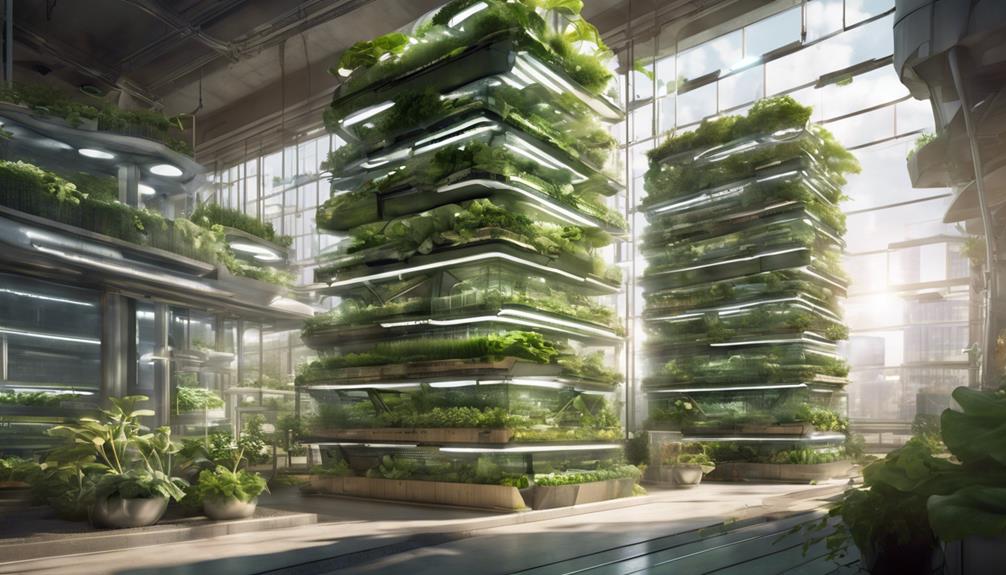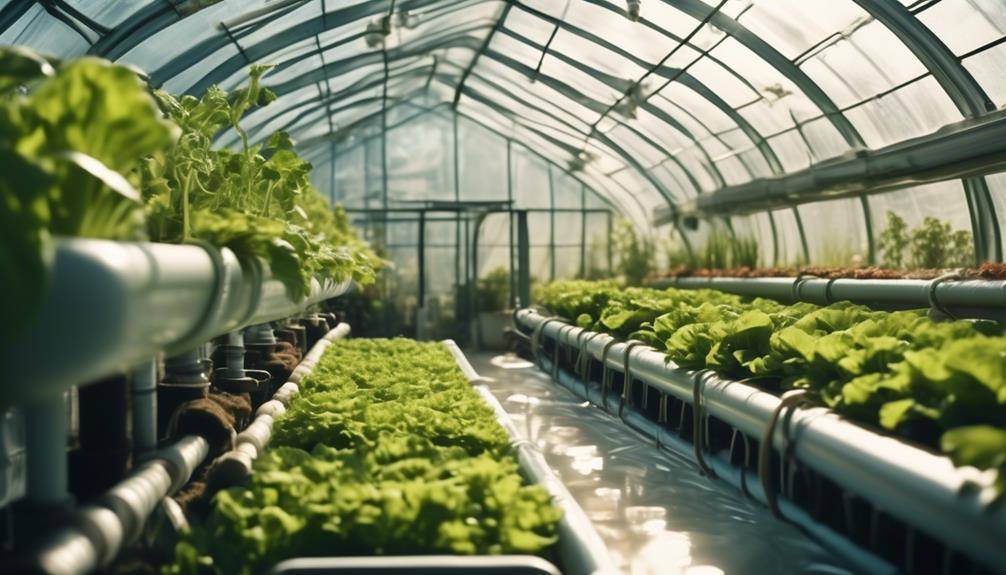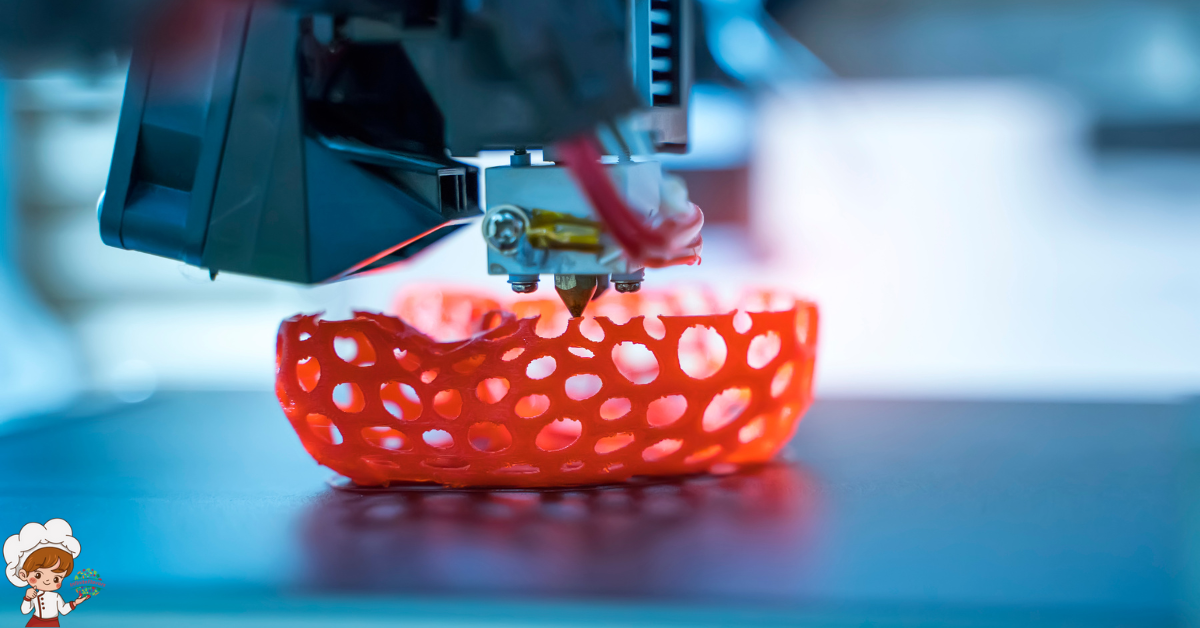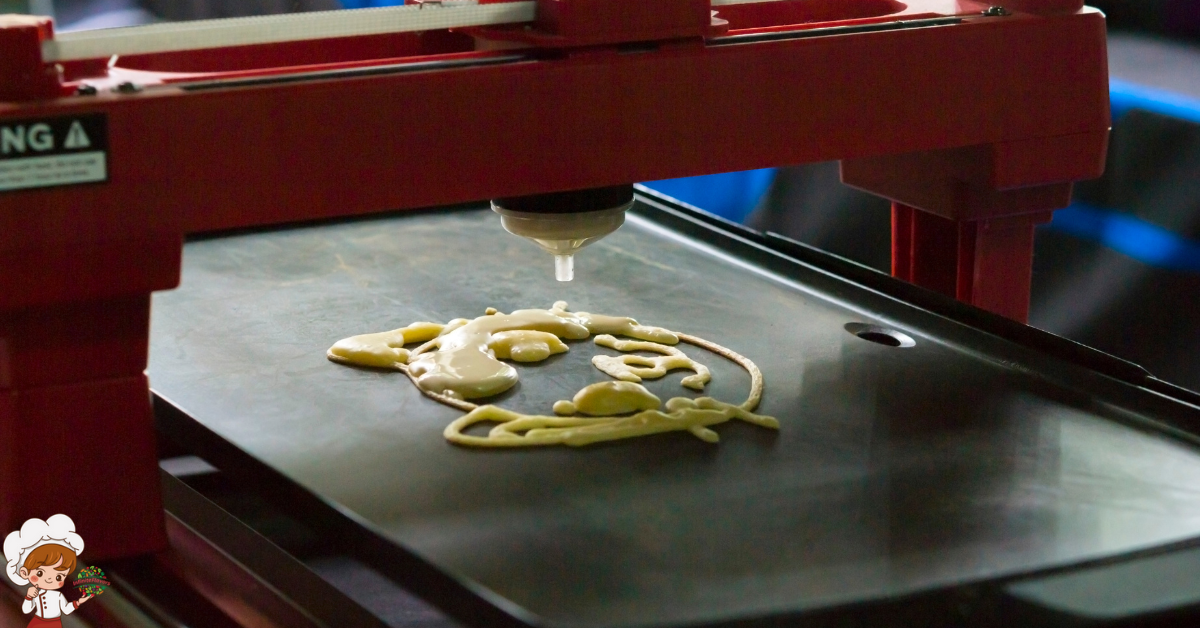How To: Aquaponics And Hydroponics In Vertical Farming
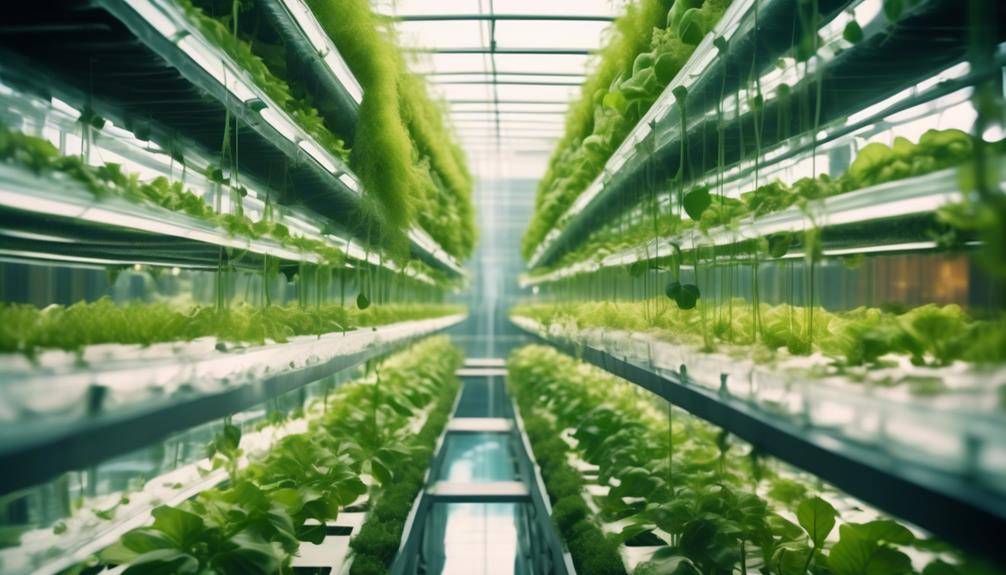
Imagine a farming method that combines the ancient practice of aquaponics with the modern technique of hydroponics. Picture a vertical farm where plants, fish, and water coexist in a symbiotic relationship, creating a truly sustainable and efficient system. In this discussion, we will explore the benefits of Aquaponics And Hydroponics In Vertical Farming, the high-quality crop production it offers, and how it can be further enhanced by incorporating hydroponics. Get ready to discover a revolutionary approach to farming that maximizes productivity and holds the key to a greener future.
Benefits of Aquaponics in Vertical Farming
Aquaponics offers numerous benefits in vertical farming, making it a highly efficient and sustainable method of cultivation. By combining aquaculture (fish farming) and hydroponics (soil-less plant cultivation), aquaponics creates a mutually beneficial relationship between fish and plants. This symbiotic system provides several advantages over traditional farming methods.
One of the key benefits of aquaponics in vertical farming is its water efficiency. The closed-loop system recirculates water, minimizing the need for large amounts of water typically used in traditional farming. The water is continuously filtered and reused, resulting in up to 90% less water consumption compared to conventional agriculture. This makes aquaponics an ideal solution for regions facing water scarcity or drought conditions.
Additionally, aquaponics eliminates the need for synthetic fertilizers and pesticides. Fish waste serves as a natural source of nutrients for the plants, while the plants naturally filter the water for the fish. This organic approach reduces the environmental impact and minimizes the risk of chemical contamination in food production.
Vertical farming techniques further enhance the benefits of aquaponics. By utilizing vertical space, aquaponic systems can maximize crop production in limited areas. The stacked layers of plants allow for higher yields per square foot, optimizing land usage and reducing the need for expansive farmland. This makes aquaponics well-suited for urban environments where land availability is limited.
Furthermore, the controlled environment in vertical farms enables year-round cultivation, unaffected by seasonal changes or adverse weather conditions. By providing consistent temperature, light, and humidity levels, aquaponics ensures a stable and predictable crop production, improving food security and reducing reliance on external factors.
Techniques of Aquaponics in Vertical Farming
To implement aquaponics in vertical farming, various techniques are utilized to maximize efficiency and productivity while ensuring optimal conditions for both fish and plants. One crucial aspect of aquaponics is nutrient management. In this system, fish waste provides the necessary nutrients for plant growth. To maintain the right balance, the water from the fish tank is circulated through a series of filters to remove solid waste and excess nutrients. This filtered water, rich in nutrients, is then directed to the plants, which absorb the nutrients and purify the water for the fish.
In vertical farming, space optimization is key. To make the most of limited space, vertical aquaponic systems utilize techniques such as vertical stacking, trellises, and hanging baskets. These techniques allow for the cultivation of a larger number of plants in a smaller footprint, increasing overall productivity.
Fish farming in aquaponics also requires careful management. The selection of fish species is crucial, as different species have varying needs and tolerances. Tilapia and trout are popular choices due to their adaptability and fast growth rates. Adequate water quality parameters, such as temperature, pH, and dissolved oxygen levels, must be maintained to ensure the health and well-being of the fish.
In addition to nutrient management and fish farming techniques, the integration of technology plays a crucial role in optimizing aquaponic systems. Automated monitoring and control systems help maintain optimal conditions by adjusting temperature, pH, and nutrient levels. This allows for precise and efficient management, reducing the risk of imbalances and ensuring the health and growth of both fish and plants.
Efficiency of Aquaponics in Vertical Farming
Aquaponics offers several efficiency benefits in vertical farming. Firstly, it allows for significant water usage reduction compared to traditional farming methods as the same water is continuously recycled within the system. Secondly, the nutrient cycling between fish waste and plant roots eliminates the need for chemical fertilizers, making aquaponics a more sustainable and environmentally friendly option. Lastly, the vertical arrangement of aquaponic systems maximizes space utilization, enabling higher crop yields in a smaller footprint. These efficiency advantages make aquaponics a promising technique for sustainable and high-yield vertical farming.
Water Usage Benefits
With its efficient water usage, aquaponics in vertical farming provides a sustainable solution for maximizing crop production. This method of cultivation offers several benefits in terms of water usage, which contribute to reduced environmental impact and cost effectiveness.
The water usage benefits of aquaponics in vertical farming include:
- Reduced water consumption: Aquaponics systems use up to 90% less water compared to traditional soil-based farming methods. This is because the water in the system is continuously recycled and reused, minimizing wastage.
- Conservation of natural resources: By reducing water consumption, aquaponics helps to conserve precious freshwater resources. This is crucial in regions facing water scarcity or drought conditions.
- Prevention of nutrient runoff: Aquaponics systems effectively capture and recycle nutrients, preventing them from being washed away into natural water sources. This reduces pollution and the negative impact on aquatic ecosystems.
- Increased efficiency: Aquaponics utilizes a closed-loop system, where water and nutrients are continuously circulated. This maximizes the use of resources and ensures optimal growth and productivity.
Nutrient Cycling Advantages
Efficient nutrient cycling is a key advantage of aquaponics in vertical farming, contributing to the system’s overall efficiency and productivity. Nutrient cycling techniques in aquaponics involve the use of fish waste as a source of nutrients for plants, while the plants, in turn, filter and clean the water for the fish. This closed-loop system ensures that nutrients are continuously recycled, minimizing waste and maximizing resource utilization. By optimizing plant growth through nutrient cycling, aquaponics in vertical farming offers several benefits.
Firstly, it reduces the need for synthetic fertilizers, making it a more sustainable and eco-friendly approach. Secondly, it provides a constant and balanced supply of nutrients to the plants, promoting healthy growth and higher yields. Lastly, the nutrient-rich water in the system can be reused, further conserving water resources. Overall, efficient nutrient cycling in aquaponics enhances the productivity and sustainability of vertical farming systems.
Space Optimization Benefits
In addition to its nutrient cycling advantages, aquaponics in vertical farming also offers space optimization benefits that contribute to its overall efficiency and productivity. By utilizing vertical farming techniques, aquaponic systems can maximize crop output while minimizing the physical footprint required for cultivation. Here are two space optimization benefits of aquaponics in vertical farming:
- Vertical stacking: Aquaponic systems can be designed with multiple tiers, allowing plants to be grown vertically. This vertical stacking technique effectively increases the growing area without requiring additional horizontal space. By utilizing the vertical space available, farmers can cultivate a larger number of plants within a smaller footprint.
- Efficient space utilization: Aquaponics in vertical farming allows for the integration of both fish and plant cultivation within the same system. This symbiotic relationship allows for efficient space utilization, as the fish tanks can be placed directly underneath the plant beds. This arrangement optimizes the use of available space and reduces the need for separate areas for fish and plant cultivation.
Sustainability of Aquaponics in Vertical Farming
Aquaponics in vertical farming is a sustainable and innovative method that combines aquaculture and hydroponics to create a closed-loop system for growing crops and raising fish. This system has gained attention due to its potential to address the sustainability and environmental impact of traditional agricultural practices.
One key aspect of aquaponics is its ability to minimize water usage. The closed-loop system recirculates water, allowing for efficient utilization and conservation. Compared to traditional soil-based farming, aquaponics uses 90% less water. This reduction in water consumption is crucial, given the increasing scarcity of fresh water resources globally. Additionally, the water in aquaponics systems remains free from harmful chemical runoff, as the fish waste is converted into nutrients for the plants, eliminating the need for synthetic fertilizers. By reducing water usage and eliminating the need for chemical inputs, aquaponics contributes to the overall sustainability of vertical farming.
Furthermore, aquaponics has a significantly lower environmental impact compared to conventional farming methods. The closed-loop system minimizes the release of pollutants into the environment, such as pesticides and fertilizers. Additionally, the efficient use of water reduces the strain on freshwater sources and helps to conserve this valuable resource. The integration of aquaculture and hydroponics also reduces land requirements, making vertical farming a viable solution for urban areas with limited space. By utilizing vertical space and maximizing crop yield per square meter, aquaponics reduces the need for land conversion, minimizing deforestation and protecting natural habitats.
High-Quality Crop Production in Aquaponics
To achieve high-quality crop production in aquaponics, nutrient-rich water circulation is crucial. By continuously circulating water between the fish tanks and the plant beds, essential nutrients from fish waste are delivered to the plants, promoting their growth and development. This efficient nutrient delivery system ensures that plants receive the necessary elements for optimal health and productivity. Additionally, aquaponics promotes sustainable fish and plant cultivation, as the waste produced by the fish serves as a natural fertilizer for the plants, reducing the need for synthetic fertilizers and minimizing environmental impact.
Nutrient-Rich Water Circulation
With a continuous flow of nutrient-rich water, aquaponics allows for the production of high-quality crops in a sustainable and efficient manner. The water quality plays a crucial role in ensuring optimal plant growth and overall system health. Here are two key factors to consider regarding nutrient-rich water circulation in aquaponics:
- Nutrient cycling: In an aquaponic system, fish waste provides essential nutrients for plant growth. The water containing fish waste is circulated through the hydroponic grow beds, where the plants absorb the nutrients. This cycling process ensures a constant supply of nutrients for the plants, promoting healthy growth and maximizing crop yields.
- Oxygenation: Adequate oxygenation of the water is vital for both fish and plant health. Proper aeration and water circulation help maintain oxygen levels, preventing the accumulation of harmful substances and ensuring the well-being of the aquatic species. Additionally, oxygen-rich water stimulates root development and nutrient uptake in plants, leading to robust growth and high-quality crops.
Sustainable Fish and Plants
Sustainable fish and plants are essential for achieving high-quality crop production in aquaponics, ensuring a harmonious ecosystem that maximizes nutrient cycling and promotes optimal plant growth. In aquaponics, fish play a vital role in providing nutrients to the plants through their waste. It is important to choose fish species that are compatible with the aquaponics system and can thrive in the given conditions.
Tilapia and trout are popular choices due to their ability to tolerate fluctuating water temperatures and high stocking densities. These fish can be raised using sustainable aquaculture practices, such as organic farming techniques that minimize the use of chemicals and promote natural processes. By implementing sustainable fish and plant choices, aquaponic systems can achieve high crop yields while reducing environmental impact.
Efficient Resource Utilization
Maximizing nutrient cycling and optimizing plant growth in aquaponics requires efficient resource utilization, ensuring that each component of the system contributes to the overall productivity without wastage. To achieve this, sustainable farming practices such as resource conservation play a crucial role. Here are two key ways to efficiently utilize resources in aquaponics:
- Water Conservation:
- Implementing water recirculation systems to minimize water usage.
- Monitoring and adjusting water pH, temperature, and nutrient levels to prevent unnecessary waste.
- Nutrient Conservation:
- Utilizing fish waste as a natural source of nutrients for plants.
- Implementing biofilters and mineralization tanks to convert excess fish waste into usable nutrients.
Year-Round Crop Cultivation in Aquaponics
Year-round crop cultivation in aquaponics allows for continuous production of fresh, nutrient-rich crops through a symbiotic system that combines aquaculture and hydroponics. This method optimizes fish and plant symbiosis, ensuring that both components thrive in a mutually beneficial environment.
In aquaponics, crops are cultivated year-round by implementing a strategic system of crop rotation. This practice involves growing different types of crops in succession, ensuring a continuous supply of fresh produce throughout the year. By rotating crops, aquaponic farmers can minimize the risk of disease and nutrient depletion while maximizing the productivity of their system.
The symbiotic relationship between fish and plants in aquaponics plays a crucial role in year-round crop cultivation. Fish waste, consisting of ammonia and other nutrients, serves as a valuable fertilizer for the plants. Through a natural process known as nitrification, beneficial bacteria convert the ammonia into nitrate, a form of nitrogen that plants can readily absorb. As the plants take up these nutrients, they purify the water for the fish, creating a closed-loop system.
To optimize fish and plant symbiosis, it is essential to select the right combination of fish and crops. Some fish species, such as tilapia and trout, have high ammonia production, making them suitable for nutrient-rich systems. Leafy greens, herbs, and fruiting plants like tomatoes and cucumbers are commonly grown in aquaponics due to their high nutrient requirements and compatibility with fish waste.
Advantages of Hydroponics in Vertical Farming
Hydroponics offers several advantages in vertical farming. Firstly, it allows for efficient use of space, as plants are grown vertically, maximizing the number of crops that can be cultivated in a limited area. This not only increases the overall crop yield but also enables farmers to make the most of their available space. Additionally, hydroponics systems require less water compared to traditional soil-based farming, reducing water consumption and promoting sustainability in agriculture.
Efficiency in Space Usage
To efficiently utilize space in vertical farming, hydroponics offers numerous advantages that enhance productivity and maximize crop yields. With hydroponics, you can optimize space usage in vertical farms by eliminating the need for soil, which takes up a significant amount of space in traditional farming methods. Here are two key advantages of hydroponics in vertical farming:
- Vertical stacking: Hydroponic systems allow for vertical stacking of plants, which means you can grow multiple layers of crops in a smaller footprint. This maximizes the use of vertical space in a vertical farm, enabling you to produce a higher volume of crops.
- Compact growth systems: Hydroponic setups are designed to be compact and efficient. By using techniques such as nutrient film technique (NFT) or deep water culture (DWC), you can grow plants in a smaller space while still providing them with the necessary nutrients and water. This compactness allows for more plants to be grown in a limited area, increasing overall productivity.
Increased Crop Yield
By optimizing space usage and implementing hydroponic systems, vertical farming offers a solution to increase crop yield and productivity in a compact and efficient manner. One of the key advantages of hydroponics in vertical farming is the ability to achieve increased crop density. In traditional soil-based farming, crops are typically spaced apart to allow for root growth and nutrient absorption.
However, in hydroponics, plants can be grown in a nutrient-rich water solution, eliminating the need for soil and allowing for closer spacing. This increased crop density allows for a higher number of plants to be grown in the same amount of space, ultimately leading to higher crop yields. Additionally, hydroponic systems in vertical farming enable optimized nutrient delivery. Nutrients can be precisely measured and delivered directly to the roots of plants, ensuring that they receive the necessary elements for healthy growth. This targeted approach to nutrient delivery promotes optimal plant growth and maximizes crop yield.
Reduced Water Consumption
With its efficient use of water, hydroponics in vertical farming offers a significant advantage in reducing water consumption. This is achieved through the implementation of various water saving techniques and innovative irrigation methods. Here are two ways hydroponics helps conserve water:
- Recirculating System: Hydroponic systems utilize a recirculating system where water is continuously reused, minimizing waste. Nutrient-rich water is pumped through the root systems of plants, and any excess is collected, filtered, and recirculated. This closed-loop system ensures that water is not lost to evaporation or runoff, resulting in substantial water savings.
- Precision Irrigation: Hydroponics allows for precise control over water delivery to plants. By using drip irrigation or misting systems, water is delivered directly to the roots, reducing water loss due to evaporation or overspray. Additionally, sensors and automation technology can be incorporated to monitor and adjust water levels based on plant requirements, further optimizing water usage.
Through these water-saving techniques and innovative irrigation methods, hydroponics in vertical farming maximizes water efficiency, making it an environmentally sustainable solution for food production.
Methods of Hydroponics in Vertical Farming
Hydroponics, a method widely used in vertical farming, involves growing plants without soil by providing them with a nutrient-rich water solution. In vertical hydroponics, plants are stacked vertically, maximizing the use of space and enabling higher crop yields. There are several methods of hydroponics commonly employed in vertical farming techniques.
One popular method is the Nutrient Film Technique (NFT). In this system, a thin film of nutrient-rich water flows continuously over the roots of the plants, providing them with a constant supply of nutrients. The excess water then drains back into a reservoir, where it is recirculated. NFT is particularly suitable for leafy greens and herbs, as it promotes rapid growth and allows for easy harvesting.
Another method is the Deep Water Culture (DWC) system. In this technique, plants are suspended in a nutrient-rich solution, with their roots submerged in the water. Oxygen is continuously supplied to the roots through the use of air stones or diffusers. DWC is beneficial for larger plants such as tomatoes, cucumbers, and peppers, as it provides ample space for root development and enables efficient nutrient absorption.
Aeroponics is a more advanced hydroponic technique that involves suspending the plant roots in the air and misting them with a nutrient solution. This method provides the roots with both nutrients and oxygen, promoting rapid growth and minimizing water usage. Aeroponics is ideal for growing delicate and high-value crops like strawberries and microgreens.
These hydroponic methods used in vertical farming offer numerous advantages. By eliminating the need for soil, vertical hydroponics maximizes space utilization and reduces the risk of soil-borne diseases. It also allows for precise control over nutrient levels, pH, and water availability, resulting in healthier and more productive plants. Additionally, the vertical arrangement of plants in hydroponic systems enables easier monitoring, maintenance, and harvesting, making it an efficient and sustainable method for producing food in urban environments.
Efficiency of Hydroponics in Vertical Farming
When it comes to the efficiency of hydroponics in vertical farming, there are several key points to consider. Firstly, hydroponics has a high yield potential, allowing for a greater production of crops compared to traditional soil-based farming methods. Secondly, hydroponics is known for its water and nutrient efficiency, as the system recirculates and reuses these resources, minimizing waste. Lastly, hydroponics maximizes space utilization, as plants can be grown vertically, making it ideal for vertical farming where space is limited. Overall, hydroponics offers a highly efficient approach to vertical farming, providing a sustainable and productive solution.
Yield Potential in Hydroponics
Hydroponics in vertical farming has demonstrated remarkable efficiency in terms of yield potential. By maximizing yield potential, vertical hydroponic systems allow for increased production in a smaller footprint compared to traditional soil-based farming. One key factor contributing to this efficiency is the optimized nutrient delivery system in hydroponics.
In hydroponic systems, plants receive essential nutrients directly through their roots, ensuring that they have access to the right amount of nutrients at all times. This precision in nutrient delivery allows plants to grow faster and produce higher yields. Additionally, hydroponic systems can be fine-tuned to provide specific nutrient ratios tailored to the needs of different plants, further enhancing their growth potential.
Moreover, the controlled environment in vertical hydroponic farms enables year-round cultivation, eliminating the dependency on seasonal variations and weather conditions. This constant growing environment ensures a consistent and continuous supply of fresh produce, maximizing productivity and meeting the demands of consumers. Overall, hydroponics proves to be an efficient and sustainable method for achieving high yield potential in vertical farming.
Water and Nutrient Efficiency
The efficient delivery of water and nutrients in hydroponic systems plays a crucial role in maximizing the productivity of vertical farming, building upon the yield potential discussed previously. Water conservation is a key focus in hydroponics, as it allows for the optimal use of this precious resource. Hydroponic systems are designed to recirculate water, minimizing wastage and ensuring that plants receive the necessary amount of water for growth.
Nutrient recycling is another important aspect of water and nutrient efficiency in hydroponics. By carefully managing and monitoring nutrient levels, growers can prevent excess nutrients from being wasted and potentially contaminating water sources. This not only helps to conserve resources but also promotes sustainable and environmentally-friendly farming practices. Overall, the efficient delivery of water and nutrients in hydroponic systems is essential for achieving high yields and reducing the ecological footprint of vertical farming.
Space Utilization Benefits
Vertical farming with hydroponics offers significant space utilization benefits, allowing farmers to maximize production in limited areas. With the use of vertical structures, such as stacked trays or towers, space can be efficiently utilized by growing plants vertically rather than horizontally. This innovative farming method allows for the cultivation of crops in multi-tiered systems, making it possible to grow more plants in the same footprint.
The space utilization benefits of hydroponics in vertical farming are further enhanced by the ability to control the growth environment. By providing optimal conditions for plant growth, such as temperature, light, and nutrient levels, plants can thrive and reach their full potential. This precision in growing conditions ensures that every inch of space is maximized, resulting in higher crop yields.
In addition, vertical farming with hydroponics allows for the integration of automation and robotics, further optimizing space utilization. Automated systems can efficiently manage plant growth, nutrient delivery, and harvesting, minimizing the need for manual labor and maximizing the use of available space.
Sustainability of Hydroponics in Vertical Farming
What are the key factors that contribute to the sustainability of hydroponics in vertical farming? Hydroponics, a soilless method of growing plants, has gained popularity in vertical farming systems due to its efficiency and sustainability. One key factor is the high efficiency of hydroponics in water usage. Unlike traditional soil-based agriculture, hydroponics recirculates water, allowing for minimal water wastage. This is particularly important in vertical farming, where space is limited, and water resources need to be conserved.
Another factor contributing to the sustainability of hydroponics in vertical farming is its ability to support sustainable fish production. Aquaponics, a combination of hydroponics and aquaculture, is often employed in vertical farms to create a symbiotic relationship between plants and fish. The nutrient-rich wastewater from the fish tanks is used as a nutrient source for the hydroponic plants, while the plants filter the water, creating a closed-loop system. This integration of hydroponics and fish production not only maximizes space utilization but also reduces the environmental impact by minimizing water pollution and nutrient runoff.
Additionally, hydroponics in vertical farming allows for precise control over nutrient levels, pH, and environmental conditions. This precision enables optimum plant growth and higher crop yields, contributing to the sustainability of vertical farming. The controlled environment also reduces the need for pesticides and herbicides, making hydroponics a more sustainable and environmentally friendly method of cultivation.
Producing High-Quality Crops in Hydroponics
With its efficient water usage, symbiotic relationship with fish production, and precision control over nutrient levels and environmental conditions, hydroponics in vertical farming is well-suited for producing high-quality crops. In hydroponics, plants are grown without soil, and instead, their roots are submerged in nutrient-rich solutions. This method allows for optimal nutrient absorption and eliminates the risk of soil-borne diseases. Here are some reasons why hydroponics is ideal for producing high-yield, nutrient-rich crops:
- Enhanced nutrient uptake: In hydroponics, plants receive a constant supply of nutrients directly to their roots. This allows them to uptake nutrients more efficiently compared to traditional soil-based farming. The precise control over nutrient levels in hydroponics ensures that plants receive the optimal mix of essential elements required for their growth and development.
- Controlled environmental conditions: In a hydroponic system, environmental conditions such as light, temperature, and humidity can be easily controlled and optimized for crop growth. This control allows for year-round cultivation and the ability to create specific conditions that promote higher yields and better quality crops.
- Minimized water usage: Hydroponics is known for its efficient water usage. Unlike traditional farming methods, where water can be lost through evaporation or runoff, hydroponics recirculates and reuses water, minimizing waste. This not only conserves water but also reduces the risk of nutrient leaching, ensuring that plants receive a consistent supply of nutrients.
- Reduced pest and disease risks: The absence of soil in hydroponics eliminates many common pest and disease issues. This reduces the need for pesticides and fungicides, resulting in cleaner and healthier crops. The controlled environment also helps to prevent the introduction and spread of pests and diseases, further protecting the crops.
Year-Round Crop Cultivation in Hydroponics
Year-round crop cultivation is a key advantage of hydroponics, allowing for uninterrupted production of high-quality crops regardless of seasonal limitations. This is made possible by the controlled environment in which hydroponics systems operate. In traditional farming, crops are subject to the whims of nature, with production limited to specific seasons. However, with hydroponics, farmers can create optimal growing conditions year-round, ensuring a steady supply of fresh produce.
One of the main reasons why hydroponics enables year-round crop production is its ability to control temperature, light, and nutrient levels. These factors play a vital role in plant growth and development. By carefully managing these variables, farmers can mimic the ideal conditions for plant growth, irrespective of the external climate. This means that even in regions with harsh winters or extreme heat, crops can still be cultivated without interruption.
Another reason why hydroponics is conducive to year-round crop cultivation is its efficient use of resources. Hydroponic systems require less water compared to traditional farming methods, as water is recycled and reused within the closed system. In addition, the use of fertilizers and pesticides is significantly reduced, as the nutrient-rich water in hydroponics systems provides plants with all the essential elements they need to thrive. This sustainable approach to farming not only ensures year-round production but also minimizes the environmental impact associated with conventional agriculture.
Combining Aquaponics and Hydroponics in Vertical Farming
Combining aquaponics and hydroponics in vertical farming presents an innovative and efficient method for sustainable crop cultivation. This technique combines the benefits of both aquaponics and hydroponics, resulting in a highly productive and environmentally friendly system. Here are some key points to consider when combining aquaponics and hydroponics in vertical farming:
- Increased nutrient availability: Aquaponics uses fish waste as a nutrient source for plants, while hydroponics relies on nutrient solutions. By combining these two systems, plants receive a continuous supply of nutrients from both sources, leading to faster growth and higher yields.
- Enhanced water efficiency: Both aquaponics and hydroponics are known for their water-saving capabilities. In aquaponics, the water from the fish tanks is circulated through the hydroponic system, providing nutrients to the plants before returning to the fish tanks. This closed-loop system reduces water consumption significantly compared to traditional soil-based farming methods.
- Space optimization: Vertical farming techniques for aquaponics and hydroponics allow for maximum space utilization. By stacking multiple levels of grow beds or NFT (nutrient film technique) channels, vertical farms can cultivate a large number of plants in a compact area. This is especially beneficial for urban farming, where space is limited.
- Pest and disease control: Vertical farming systems are typically housed in controlled environments, making it easier to monitor and control pests and diseases. By minimizing exposure to external factors, such as insects and soil-borne pathogens, aquaponics and hydroponics in vertical farming can reduce the need for pesticides and fungicides.
Combining aquaponics and hydroponics in vertical farming offers a sustainable and efficient solution for urban agriculture. By optimizing nutrient availability, water usage, space utilization, and pest control, this innovative approach holds great potential for future food production.
Maximizing Productivity With Aquaponics and Hydroponics
To maximize productivity in aquaponics and hydroponics, it is crucial to optimize nutrient delivery, water management, and environmental control. These sustainable farming techniques offer increased crop production potential compared to traditional soil-based methods.
In aquaponics, nutrient delivery is optimized through the symbiotic relationship between fish and plants. The fish waste provides essential nutrients for the plants, while the plants naturally filter and purify the water for the fish. By carefully monitoring and adjusting the nutrient levels in the system, you can ensure that the plants receive the optimal amount of nutrients for growth. This precise control over nutrient delivery promotes healthy plant growth and maximizes productivity.
Water management is another key aspect of maximizing productivity in aquaponics and hydroponics. These systems use water more efficiently than traditional farming methods, as water is recirculated and reused. By implementing water-saving techniques such as drip irrigation or nutrient film technique, you can minimize water waste and ensure that every drop is utilized effectively. Additionally, maintaining proper pH and oxygen levels in the water is essential for the health of both the fish and plants. Regular monitoring and adjustments to these parameters will help optimize water conditions and enhance productivity.
Environmental control plays a crucial role in maximizing productivity in aquaponics and hydroponics. By creating a controlled environment with proper lighting, temperature, and humidity levels, you can create ideal growing conditions for your crops. LED lights can be used to provide specific light wavelengths that promote plant growth, while temperature and humidity control systems ensure an optimal climate. These environmental control measures enable year-round cultivation and eliminate the limitations imposed by seasonal changes.
Aquaponics And Hydroponics In Vertical Farming; Frequently Asked Questions
Can Aquaponics Be Used for Large-Scale Commercial Farming?
Yes, aquaponics can be used for large-scale commercial farming. It offers economic viability by reducing water usage and increasing crop yield. Additionally, it has environmental benefits such as minimizing the need for pesticides and reducing the carbon footprint of agriculture.
What Are the Main Differences Between Aquaponics and Hydroponics?
Aquaponics and hydroponics have significant differences. Aquaponics combines aquaculture and hydroponics, using fish waste to fertilize plants. Hydroponics, on the other hand, grows plants in nutrient-rich water without fish.
How Does Aquaponics Contribute to Water Conservation in Vertical Farming?
Aquaponics in vertical farming contributes to water conservation by utilizing a closed-loop system. The fish waste provides nutrients for the plants, reducing the need for additional water and fertilizers. This efficient method saves water compared to traditional farming practices.
What Types of Crops Can Be Grown Using Hydroponics in Vertical Farming?
Growing crops using hydroponics in vertical farming offers several benefits. It allows for efficient use of space, reduces water consumption, and provides optimal control over nutrient levels. However, challenges include maintaining proper pH levels and preventing disease outbreaks.
Is It Possible to Integrate Aquaponics and Hydroponics Systems in a Single Vertical Farm?
Yes, it is possible to integrate aquaponics and hydroponics systems in a single vertical farm. By combining these methods, you can maximize space efficiency, nutrient utilization, and crop yield, making vertical farming even more sustainable and productive.
Conclusion
In conclusion, the utilization of aquaponics and hydroponics in vertical farming offers numerous benefits such as increased efficiency, sustainability, and year-round crop cultivation. The combination of these two techniques allows for high-quality crop production and maximizes productivity. By incorporating aquaponics and hydroponics in vertical farming systems, we can revolutionize the way we grow crops, ensuring a more sustainable and efficient future for agriculture.



